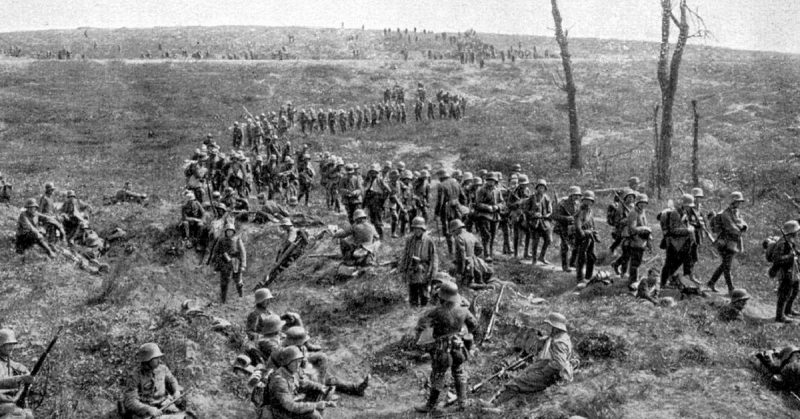By late 1917, the German Empire’s High Command knew they had to turn the war around quickly. Progress against the Allies was slow and they were losing ground to them in many places. Furthermore, rationing of food in Germany was extremely unpopular. In a matter of months, the American Expeditionary Force (AEF) would arrive and the combined forces of the Allies would be too much for the Central Powers.
In early 1918, General Erich Ludendorff devised a plan of action to secure favorable ground from the British Expeditionary Force (BEF) around the Somme, northeast of Paris. With dozens of divisions moving to the Western Front after the Russian surrender in the East and the assumption that the BEF was severely depleted by the major battles of 1917, a massive offensive was planned to take the cities of Amiens and Arras. Then, the German Army could isolate and destroy the BEF in Flanders, while holding off the French to the southwest.
This whole grand scheme was dubbed Operation Michael. It was the beginning of what became known as the Spring Offensive, Germany’s last push before the collapse of their Western Front and the end of World War I.
The German’s had been right, the BEF was exhausted, depleted, and had been taking over the responsibility of French Positions around St. Quentin. While the British Third Army commanded the front up until the Flesquières Salient near Cambrai, the Fifth Army now held the longest front of any, from the same salient down to Barisis, where the French Army took over.
The winter of 1917-18 saw the British frantically building up the defenses in this bombed-out wasteland which had seen some of the fiercest action on the Western Front. They also reformed their divisions from 12 to nine Battalions (like the French and Germans) to tighten up the depleted army short on reinforcements.
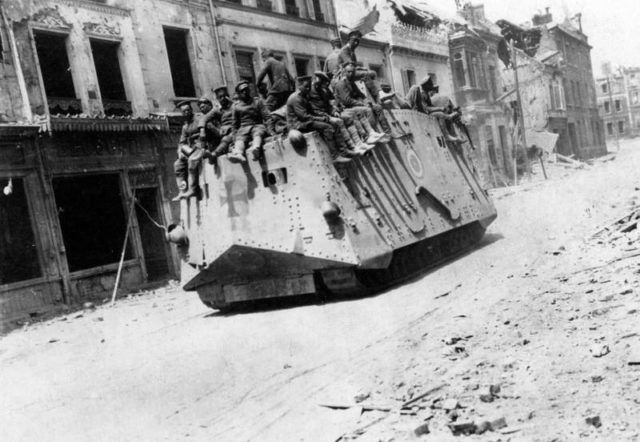
Likewise, with their force already stretched thin over a long line and outnumbered by ever-increasing German troops, they had to defend their line by relying on firepower, not numbers. Thus, a three-zone system was developed that consisted of scattered outposts in the foremost sector supported by a fractured line of more posts and then yet another line of redoubts behind this. Instead of a continuous, solid line, this system relied on concentrated areas of resistance and positions placed in a system, so as to provide mutual support with sweeps from machine guns and rifles.
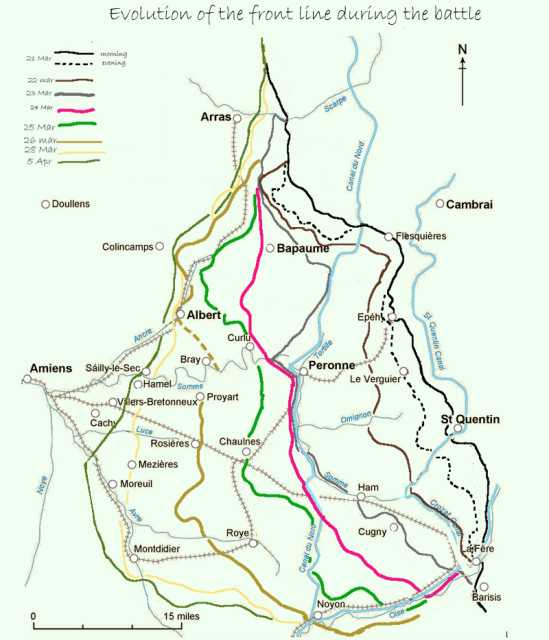
As World War I was pushing the army’s of Europe to quickly develop their trench warfare tactics, the Germans had learned their own, that had mixed results against the British in the Spring Offensive and Operation Michael.
For their infantry, Stormtroopers, or Stoßtruppen, were units composed of the best warriors in the German Army, hand-picked from the divisions. Their role was to advance rapidly through holes or weak points in the enemy line to attack deep positions like command posts, artillery, and supply depots and destroy communications and supply lines to the front. The enemy’s forward positions would then be isolated and attacked by the regular German formations.
But apart from the horrors of infantry warfare in the trenches and apocalyptic no-mans land, the Great War was also defined by the never-before-seen devastation caused by thousands of pieces of giant war machinery firing millions of shells and the nightmare that is chemical warfare.
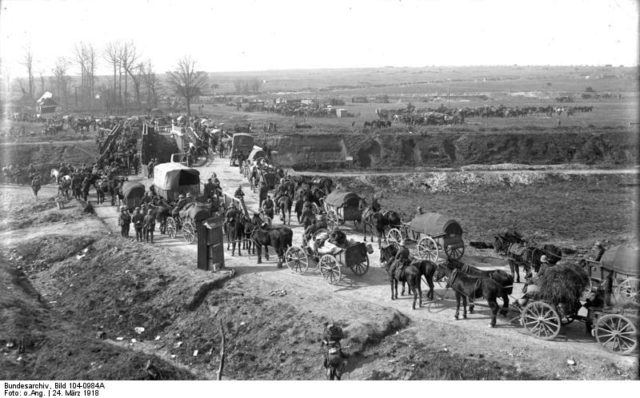
The German Army concentrated their heavy artillery bombardments on the British rear positions, destroying communications and supplies, severing the fighters in the trenches from higher command. British soldiers on the front lines choked on mustard and chlorine gas released by the enemy. More German artillery blasted suspected positions of British counter-batteries.
It was at 4:40 AM on March 21st, 1918 the German war machine opened fire on the BEF, beginning Operation Michael along a 60 km front. With 6,600 guns and 3,500 mortars, they dropped 3,500,000 shells on the British Fifth and Third Armies and part of the First. It was the biggest barrage of the war.
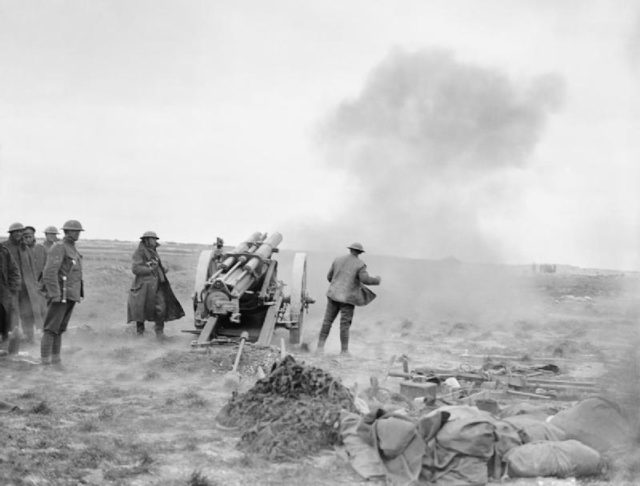
The infantry assault began at 9:40 AM and advanced behind a creeping barrage of artillery fire. The forward push was moving at different paces along the line. Due to the thick morning fog and smoke from the artillery fire, many German Stormtroopers were able to slip right past the intermittent BEF forward positions and into deeper areas where the Fifth Army had not finished preparing defenses. In many places, the British line held for hours.
But by midday, the Germans were breaking through southwest of St. Quentin. The Fifth Army’s General Hubert Gough had learned that many of his corps were being flanked and that a large portion of his men in the forward most positions had been taken prisoner by the Germans who had snuck up in the smoke and fog.
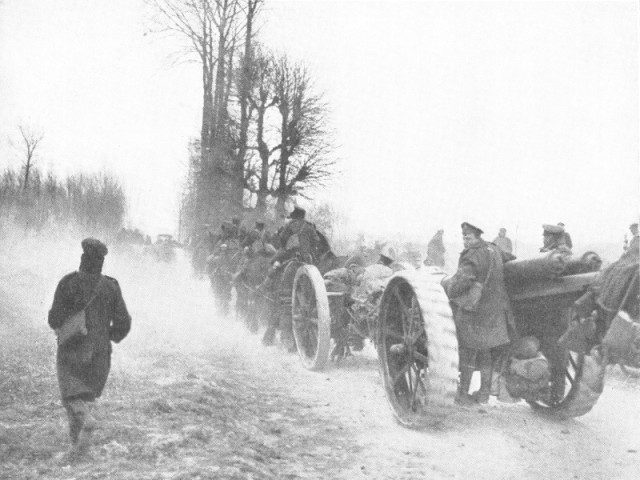
Much of the line held by the Fifth and Third Armies was breaking, sometimes totally thrown back and other times, a slow, coordinated withdrawal that caused many German casualties. Many British units fought hard and were able to cover each other’s retreats effectively from their strategically placed positions. But by the end of the first day, the BEF had been pushed out of their defenses, sometimes several miles back.
The Germans paid a high price for their gains that day with 40,000 casualties. The BEF suffered similar losses, but also, the loss of the Fifth Army’s only completed forward trenches and fortifications.
For the next two weeks, the German advance progressed in a similar fashion, gradually pushing the British back on both the North and South sides of the River Somme and claiming about 3,100 square kilometers of ground. But troop losses were high and by April 5th, they still hadn’t reached their goals. Ameins and Arras were still in the hands of the Entente. Supplying troops over the war-torn terrain was a slow, aggravating process. Wells they, themselves poisoned during previous retreats in the War couldn’t be used. Stormtrooper casualties were particularly high, wiping out the elite forces of the German Army. British arms production was running at a remarkable pace, negating German gains in artillery and other equipment captured and then some.
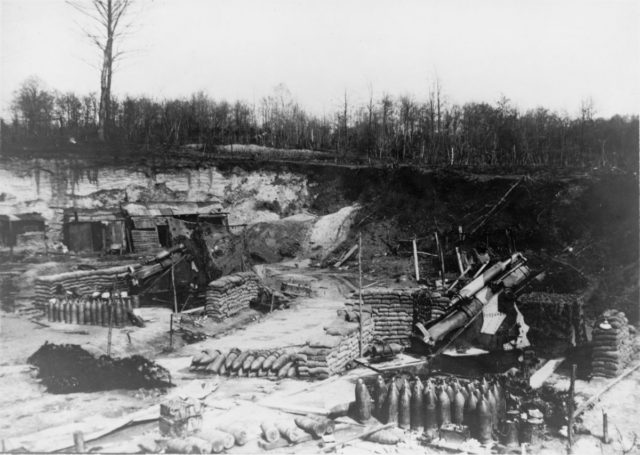
By the end of Operation Michael, the Germans had suffered 239,800 casualties, the British, 177,739, and the French, 77,000. The Americans, who had just started to arrive, lost 77 men.
And yes, the Americans were indeed arriving. The German Army had once again began to lose more men then it could afford to, and now the Allies were amassing over one million more fresh troops for a massive counter-attack. Germany would have one more massive push that would gain major ground and a few more, less successful drives, but the war was already turning against them. The British and French had held it together beneath the guns and gas of Operation Michael and this meant that the Germans would eventually lose the war.
